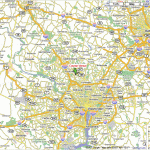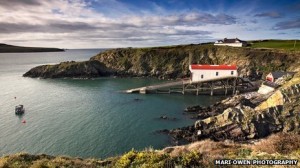This article is written by Aashish Gupta, founder of Yellowleg.com — The Discerning Traveller’s Bookstore
Travelling with family and friends is fun but there is a different thrill altogether if you happen to be a solo traveller. Here are some of the things you must keen in mind while travelling alone though.
Travel is fatal to prejudice, bigotry, and narrow-mindedness, and many of our people need it sorely on these accounts. Broad, wholesome, charitable views of men and things cannot be acquired by vegetating in one little corner of the earth all one’s lifetime — Mark Twain.
Isn’t Mark Twain absolutely fantastic with his witty yet truthful one-liners? I am currently reading the book The Innocents Abroad written by him, which unveils the true spirit of travelling and is undoubtedly one of the best books ever written about excursions away from home.

So how does one start? I am sure you must have been to lot of places, met lot of different people and have enjoyed your travel. Were you there with friends? Family? Friends and Family? If yes, I am sorry to say but you might have missed that special novelty the place had to offer.
Consider this, what if you are given an opportunity to go somewhere you’ve never been before? And that too you’re asked to travel all alone! What do you say to yourself?
Surprisingly, I come across majority of people who usually end up responding to that question as ‘Yaar, main wahan akela jaa’ke kya karunga? (What do I do there alone?)’ and snub that opportunity which could have given them more rewarding experiences than they possibly could ever imagine.
And to your surprise, you may never know when travelling alone taught you to reach out to strangers and be compassionate and empathetic towards people around.
So have an open mind and the next time when you plan a vacation, think about travelling solo and take that leap! I’m sure you won’t regret it!
So how can you travel alone? What things to pack up? What to do while you’re alone? Read on.
Sounds too cliched, right? But it’s not. It’s really very important to have the information handy before you visit any unknown place.
Find about the culture, people, food, the local laws and the best time to visit. This will make you confident and fearless enough about the unknown factor.
 If possible, get a local map and be sure that you carry it around every time.
If possible, get a local map and be sure that you carry it around every time.
Maps usually help create a mental image where you’re going.
Moreover, if you’re just more inquisitive, you can visit online forums where you can just post a specific query about the place you want to go and within minutes you’ll have it answered.
Guidebooks also usually provide a list of local police station, hospital, emergency cab service numbers. Better safe than sorry!
Tip: Websites like WikiTravel, Lonely Planet, Wikipedia can be of great help. Lonely Planet has an array of books published on almost all the international destinations. Pick one and you’re ready to go! Remember, the more information you have about the place, the better you can deal with any given situation.
Budgeting is an art. What kind of a traveller are you? Do you shop on impulse? Or you buy things ONLY when you need them? Do you like to splurge? Or a shoestring budget is more than enough?
When you know yourself better, you can spend better. Deciding a budget and sticking to it is one of the best way hone your self-discipline skills.
For instance: You must decide how much you want to spend every day: Room/Dorm rent – Rs. 500, food – Rs500 for and Rs. 500 for miscellaneous expenses, if any.
So a budget of Rs. 10, 000 is more than enough for a weeklong trip. You can always save at times where you really can.
 It really doesn’t make much sense if you rent out an expensive yet luxurious room and you’re out all day seeing places. Rather you can always go for a dormitory, which is usually comes at 1/10th rate of a luxurious room and can become another place where you can socialize a bit.
It really doesn’t make much sense if you rent out an expensive yet luxurious room and you’re out all day seeing places. Rather you can always go for a dormitory, which is usually comes at 1/10th rate of a luxurious room and can become another place where you can socialize a bit.
If you take a dorm, I am sure you’ll have lot of interesting people around you from different walks of life. Just another way to enjoy your journey! So it all depends upon you the kind of choice you want to make.
Tip: Budgeting can leave you stressed. Just to make it simpler, set your priorities as in what you really want out of your trip. One more thing, every choice will come with its price. So be it having a beer or exotic food, ensure that you know how much you’re spending on what, keep a tab!
Ask yourself what is it that you really need? Asking this over and over while packing can be of great help.
From regular clothes you wear, to goggles, sandals, shoes, socks, deodrants, soaps, cosmetics and some heavy ones like cameras, batteries, chargers, books are something you can think about.
 If you’re going to a city, you can always buy things whenever you need them. Stuffing your backpack with all the things that you use every day will only leave your backpack way too heavy and you being worn out carrying it along. Rather than taking 2-3 pairs of jeans, you can always go for cotton trousers or khakis that are light and comfortable.
If you’re going to a city, you can always buy things whenever you need them. Stuffing your backpack with all the things that you use every day will only leave your backpack way too heavy and you being worn out carrying it along. Rather than taking 2-3 pairs of jeans, you can always go for cotton trousers or khakis that are light and comfortable.
Tip: Whatever you’re packing, ensure that you travel light. Always! Since you may never know when you might miss a bus, train or even a plane. So carrying around that loaded baggage with you can give you a tough time. You never want to be left frustrated with pondering over why you packed so much!
When you’re alone you can be yourself. But soon there will be time when you will realise that you feel awkward being alone, you search around and there’s no one to talk to, no one to share with what you’re up to, how and what are you feeling and the list goes on. Don’t lose heart and stay bold!
There’s a way to deal with it, what I do is I simply jot down whatever things I faced all day including anger, happiness, excitement, loneliness whatever in my travelogue. It helps me cope up with myself. And the next day I start afresh!
Whatever things you are experiencing you can write them down before the day ends, and soon you’ll start appreciating it.
This method may or may not work for you, but within first couple of days of your travel, I am sure you’ll find your own ways to deal with your emotions!
Soon you’ll start to enjoy being with yourself and that’s when you enjoy things around you.
Travel is one of the best ways to self-discovery; it’s the best teacher where the world is your classroom.
Carpe Diem!
There are many more things that can be written here. I wish to cut this article short by quoting few lines by Dr. Seuss
Congratulations!
Today is your day,
You’re off to Great Places!
You’re off and away!
You have brains in your head.
You have feet in your shoes.
You can steer yourself
any direction you choose.
You’re on your own. And you know what you know.
And YOU are the guy who’ll decide where to go.
Yes, you’re off and away!
Bon Voyage!
Aashish Gupta
2011
http://www.rediff.com/getahead/slide-show/slide-show-1-travel-travelling-solo-4-tips-to-remember/20111111.htm
Average Rating: 4.9 out of 5 based on 269 user reviews.






